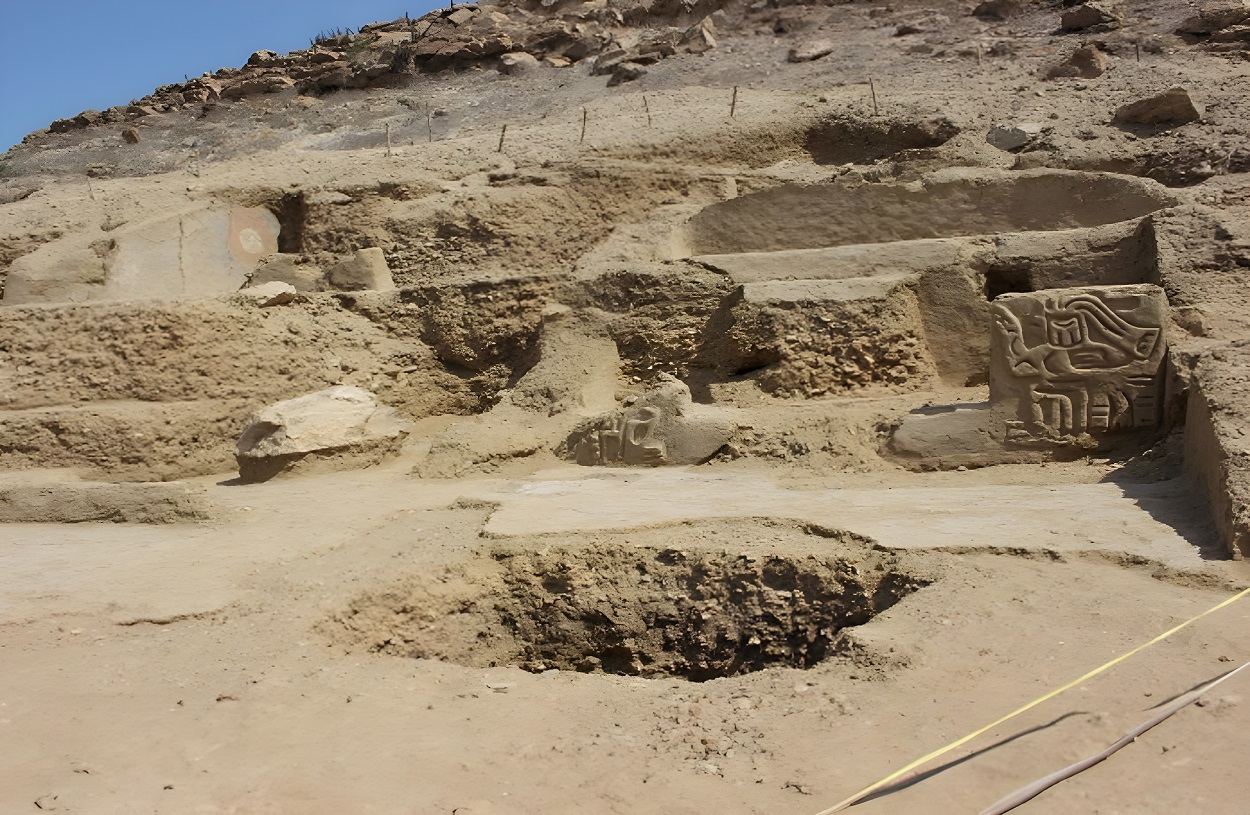Archaeologists from the Ministry of Culture (Peru) have discovered an ancient temple complex at Los Paredones near the city of Nazca, Peru.
Los Paredones was an Inca administrative centre from the reign of Topa Inca Yupanqui, the tenth Sapa Inca (AD 1471–93) of the Inca Empire, fifth of the Hanan dynasty.
The Inca constructed the settlement a short distance from Cahuachi, the ceremonial centre of the Nazca civilisation, and the world-famous Nazca lines in the Nazca Desert.
Excavations have revealed the remains of a temple complex from the Preclassic Era (also known as the Formative Period), with preliminary dating placing the complex to 5,000-years-ago.
The temple is defined by walls constructed using mudbrick, which contains a central staircase leading to a raised plaza in the centre.
Inside the temple interior, archaeologists found friezes adorned with anthropomorphic images, notably one depicting a human body with a bird’s head and reptile claws.
In the upper part of the complex, there is a wall adorned with fine plaster and a pictorial design featuring white, blue, and red pigments.
In a second excavation area, the researchers also found traces of ceremonial architecture dating from the late Moche period between AD 600 to 700. The Moche culture were a group of autonomous polities that shared a common culture, rather than a territorial area that formed a kingdom or empire.
This excavation uncovered a sizable stepped platform with buttresses, along with the skeletal remains of an infant who died at the age of 5 or 6 years old.
According to the Ministry of Culture (Peru): “These investigations seek to examine the appearance, evolution, and development of the ceremonial centre and elite cemetery of La Otra Banda and Úcupe, which were built and consolidated regionally between the Formative and Moche periods, in association with several other emerging centres in the Jequetepeque Valley and Lambayeque.”
Header Image Credit : DDC Lambayeque
Sources : Ministry of Culture





